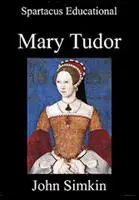Battle of Bosworth
In August 1485, Henry Tudor, the leader of the Lancastrians, arrived in Wales with 2, 000 of his supporters. He also brought with him over 2, 000 mercenaries recruited from French prisons. While in Wales, Henry also persuaded many skillful longbowmen to join him in his fight against Richard III. By the time Henry Tudor reached England the size of his army had grown to 5,000 men.
When Richard heard about the arrival of Henry he marched his army to meet his rival for the throne. On the way, Richard tried to recruit as many men as possible to fight in his army, but by the time he reached Leicester he only had an army of 6,000 men. The earl of Northumberland also brought 3,000 men but his loyalty to Richard was in doubt.
Richard sent an order to Lord Thomas Stanley and Sir William Stanley, two of the most powerful men in England, to bring their 6,000 soldiers to fight for the king. Richard had been informed that Lord Stanley had already promised to help Henry Tudor. In order to persuade him to change his mind, Richard arranged for Lord Stanley's eldest son to be kidnapped.
On 21 August 1485, King Richard's army positioned themselves on Ambien Hill, close to the small village of Bosworth in Leicestershire. Henry arrived the next day and took up a position facing Richard. When the Stanley brothers arrived they did not join either of the two armies. Instead, Lord Stanley went to the north of the battlefield and Sir William to the south. The four armies now made up the four sides of a square.
| Spartacus E-Books (Price £0.99 / $1.50) | ||||||
|---|---|---|---|---|---|---|
Without the support of the Stanley brothers, Richard looked certain to be defeated. Richard therefore gave orders for Lord Stanley's son to be brought to the top of the hill. The king then sent a message to Lord Stanley threatening to execute his son unless he immediately sent his troops to join the king on Ambien Hill. Lord Stanley's reply was short: "Sire, I have other sons."
Henry Tudor's forces now charged King Richard's army. Although out-numbered, Richard's superior position at the top of the hill enabled him to stop the rival forces breaking through at first. When the situation began to deteriorate, Richard called up his reserve forces led by the earl of Northumberland. However, Northumberland, convinced that Richard was going to lose, ignored the order.
Richard's advisers told him that he must try to get away. Richard refused, claiming that he could still obtain victory by killing Henry Tudor. He argued that once the pretender to the throne was dead, his army would have no reason to go on fighting.
A few of his close friends agreed to accompany him on his mission. So that everyone knew who he was, Richard put on his crown. After choosing an axe as his weapon, Richard and a small group of men charged down the hill.
Henry's guards quickly surrounded their leader. Before Richard could get to Henry, he was knocked off his horse. Surrounded by the enemy, Richard continued to fight until he was killed.
Tradition has it that Richard's crown was found under a gorse bush. Lord Stanley, whose intervention had proved so important, was given the honour of crowning Henry VII the new king of England and Wales.
Primary Sources
(1) Polydore Vergil, English History (c.1530)
Richard, because he expected victory, received Henry with great courage... Henry's army... were now almost out of hope of victory, when William Stanley with three thousand men came to the rescue... Richard's army fled, and King Richard alone was killed fighting manfully in the thickest press of his enemies.
(2) The Croyland Chronicle (1485)
King Richard received many mortal wounds and like a spirited and most courageous prince, fell in battle on the field and not in flight.
(3) John Rous, History of England (c. 1490)
King Richard, after receiving many mortal wounds, died a fearless and most courageous death, fighting on the battlefield, not in flight. His body was found among the other dead... and after suffering many humiliations, it was taken to Leicester in an inhuman manner, with a rope around its neck.
Student Activities
Henry VIII (Answer Commentary)
Henry VII: A Wise or Wicked Ruler? (Answer Commentary)
Henry VIII: Catherine of Aragon or Anne Boleyn?
Was Henry VIII's son, Henry FitzRoy, murdered?
Hans Holbein and Henry VIII (Answer Commentary)
The Marriage of Prince Arthur and Catherine of Aragon (Answer Commentary)
Henry VIII and Anne of Cleves (Answer Commentary)
Was Queen Catherine Howard guilty of treason? (Answer Commentary)
Anne Boleyn - Religious Reformer (Answer Commentary)
Did Anne Boleyn have six fingers on her right hand? A Study in Catholic Propaganda (Answer Commentary)
Why were women hostile to Henry VIII's marriage to Anne Boleyn? (Answer Commentary)
Catherine Parr and Women's Rights (Answer Commentary)
Women, Politics and Henry VIII (Answer Commentary)
Historians and Novelists on Thomas Cromwell (Answer Commentary)
Martin Luther and Thomas Müntzer (Answer Commentary)
Martin Luther and Hitler's Anti-Semitism (Answer Commentary)
Martin Luther and the Reformation (Answer Commentary)
Mary Tudor and Heretics (Answer Commentary)
Joan Bocher - Anabaptist (Answer Commentary)
Anne Askew – Burnt at the Stake (Answer Commentary)
Elizabeth Barton and Henry VIII (Answer Commentary)
Execution of Margaret Cheyney (Answer Commentary)
Robert Aske (Answer Commentary)
Dissolution of the Monasteries (Answer Commentary)
Pilgrimage of Grace (Answer Commentary)
Poverty in Tudor England (Answer Commentary)
Why did Queen Elizabeth not get married? (Answer Commentary)
Francis Walsingham - Codes & Codebreaking (Answer Commentary)
Sir Thomas More: Saint or Sinner? (Answer Commentary)
Hans Holbein's Art and Religious Propaganda (Answer Commentary)
1517 May Day Riots: How do historians know what happened? (Answer Commentary)




